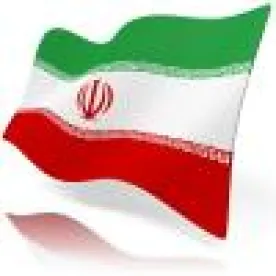Although the provisions that limit Iran's nuclear program are spelled out in some detail, those related to relaxing economic sanctions against Iran are quite vague.
With the announcement that Iran has agreed to a framework for a deal to curtail its nuclear program and lift international economic sanctions against Iran relating to its nuclear program, it still remains unclear how and when the economic sanctions against Iran will be relaxed. Although the framework’s provisions regarding curtailment of Iran's nuclear program are spelled out in some detail, those that pertain to relaxing economic sanctions are limited to general principles that, at this stage, are vague. The following are the main points relating to the economic sanctions:
The framework announced on April 2 is not a final agreement and has not been signed by the parties (the United States, the United Kingdom, Germany, France, the European Union, China, Russia, and Iran). The deadline for negotiating a final agreement is June 30. The negotiations between now and June 30 will aim to provide details for implementing the agreed framework and, if successful, will presumably explain the timetables, milestones, and procedures that will determine when and how relaxation of the nuclear-related economic sanctions will be accomplished. If the negotiations do not reach a successful outcome by June 30 and there is no extension at that time, the sanction concessions that were implemented when the parties initially agreed to negotiate in November 2013 are scheduled to expire.
The economic sanctions that would be relaxed pertain to Iran's nuclear program. Other economic sanctions imposed, or that could be imposed, against Iran for non–nuclear issues (e.g., those relating to human rights violations, ballistic missile development, and terrorism) are not expected to be affected by the ultimate agreement.
The relaxation of nuclear-related economic sanctions would be accomplished in phases tied to Iran's compliance with its undertakings to curtail its nuclear program. It is not clear what the process will be for relaxing the sanctions and what milestones Iran will need to achieve for this phased relaxation. At present, it appears that the milestones will be linked, at least in part, to the International Atomic Energy Agency’s inspections of Iran's nuclear activities, but there appears to be some disagreement between the parties over this issue.
The framework contemplates that if Iran does not fulfill its obligations with respect to curtailing its nuclear program, the sanctions slated to be relaxed under the agreements contemplated in the framework would “snap back” into effect. How this would work in practice is unclear.
The nuclear-related sanctions to be relaxed would include those imposed by the United States, European Union (EU), and United Nations. All United Nations resolutions that pertain to imposing nuclear-related sanctions on Iran would be repealed, and a new resolution would recognize the parties’ final agreements. Although there is some discussion of a snap back of the prior United Nations resolutions if Iran violates the final accords, it is unclear if there would be such a snap back or how such a snap back would be implemented.
US sanctions against Iran have been imposed either by acts of Congress or by various US administrations pursuant to presidential executive orders or regulations. To what extent congressional action may be required to relax sanctions pursuant to a final agreement with Iran is a controversial issue between the Obama administration and many members of Congress. Given that these members of Congress have expressed skepticism and opposition toward any agreement with Iran, it remains to be seen how internal US politics may affect any ultimate agreement with Iran.
Interestingly, the US government issued a somewhat detailed description of the framework’s principles, but the Iranian government and other parties to the negotiations (including EU members France, Germany, and the UK) did not join in issuing the statement released by the US government. Indeed, press reports indicate that the Iranian foreign minister has expressed some criticism of the US-issued framework’s description. The foreign minister was quoted as having said, “The Americans put what they wanted in the fact sheet . . . I even protested this issue with [US Secretary of State John] Kerry himself.”
As the framework may be analogous to a nonbinding memorandum of understanding, the absence of a joint statement that endorses or elaborates on some of the key issues (e.g., the process, timing, and milestones for relaxing sanctions and the snap back) may be an indication that those issues are still negotiable.
It remains unclear if or when US and EU sanctions may be relaxed. Indeed, on April 2, the US Office of Foreign Assets Control (OFAC) issued an advisory regarding the ongoing status of US sanctions. OFAC noted that the framework announced by the parties does not result in any change in the current sanctions against Iran and that the only applicable sanctions relief in respect of the US sanctions is that granted in November 2013 when the negotiations commenced. Consequently, we recommend that parties affected by, or potentially subject to, US sanctions against Iran take no steps to reengage with Iran beyond those that have been permitted prior to the announced framework.



 />i
/>i
